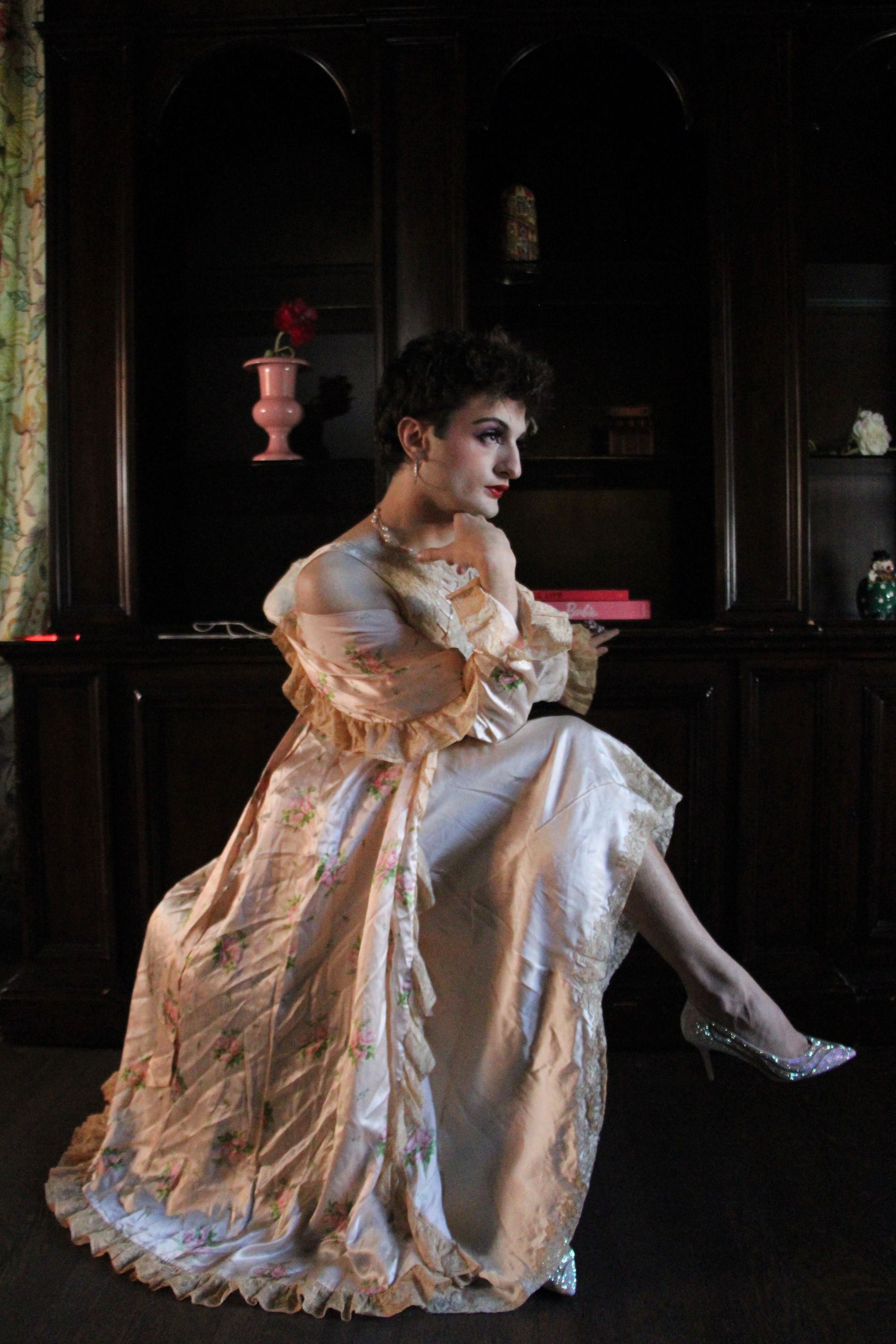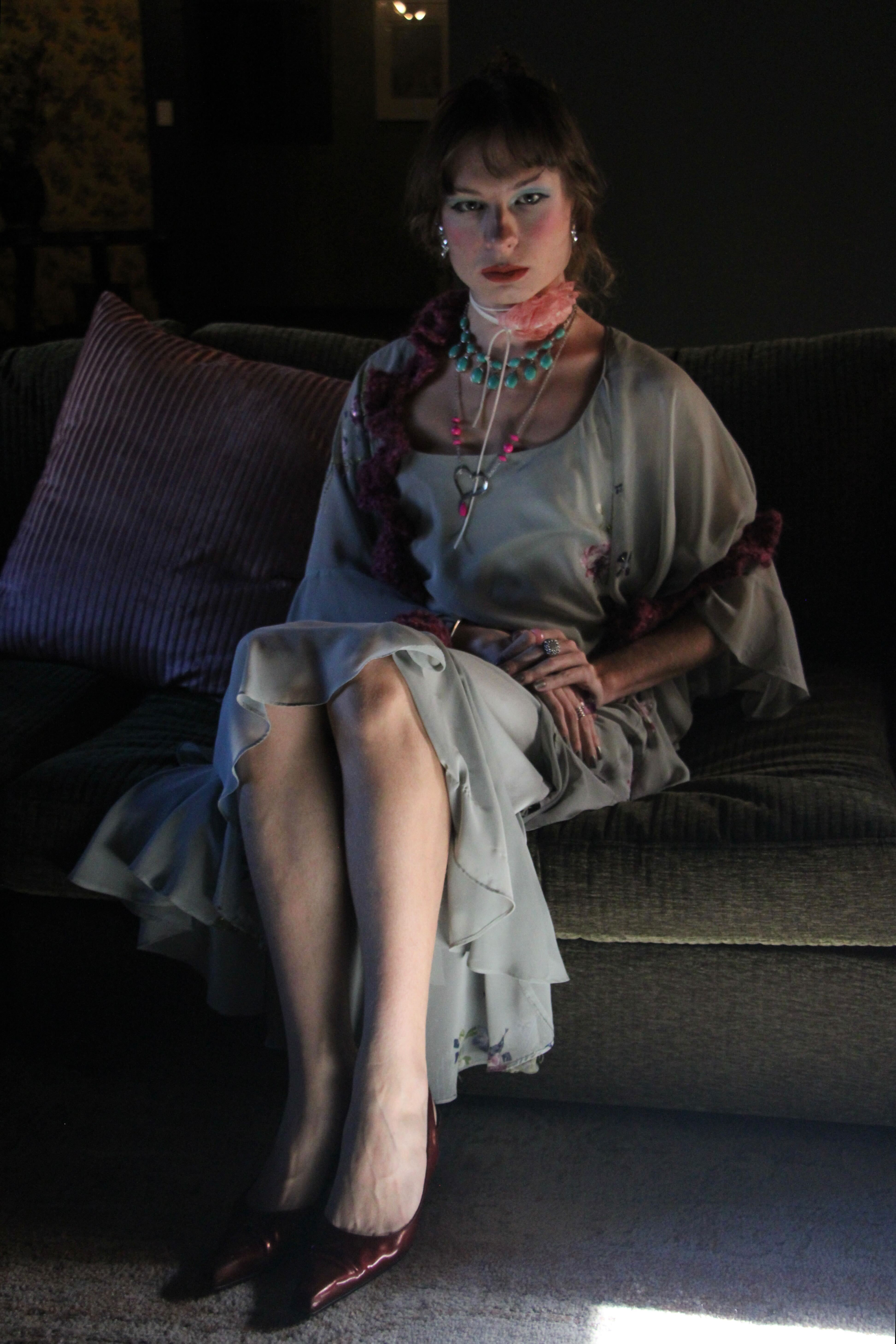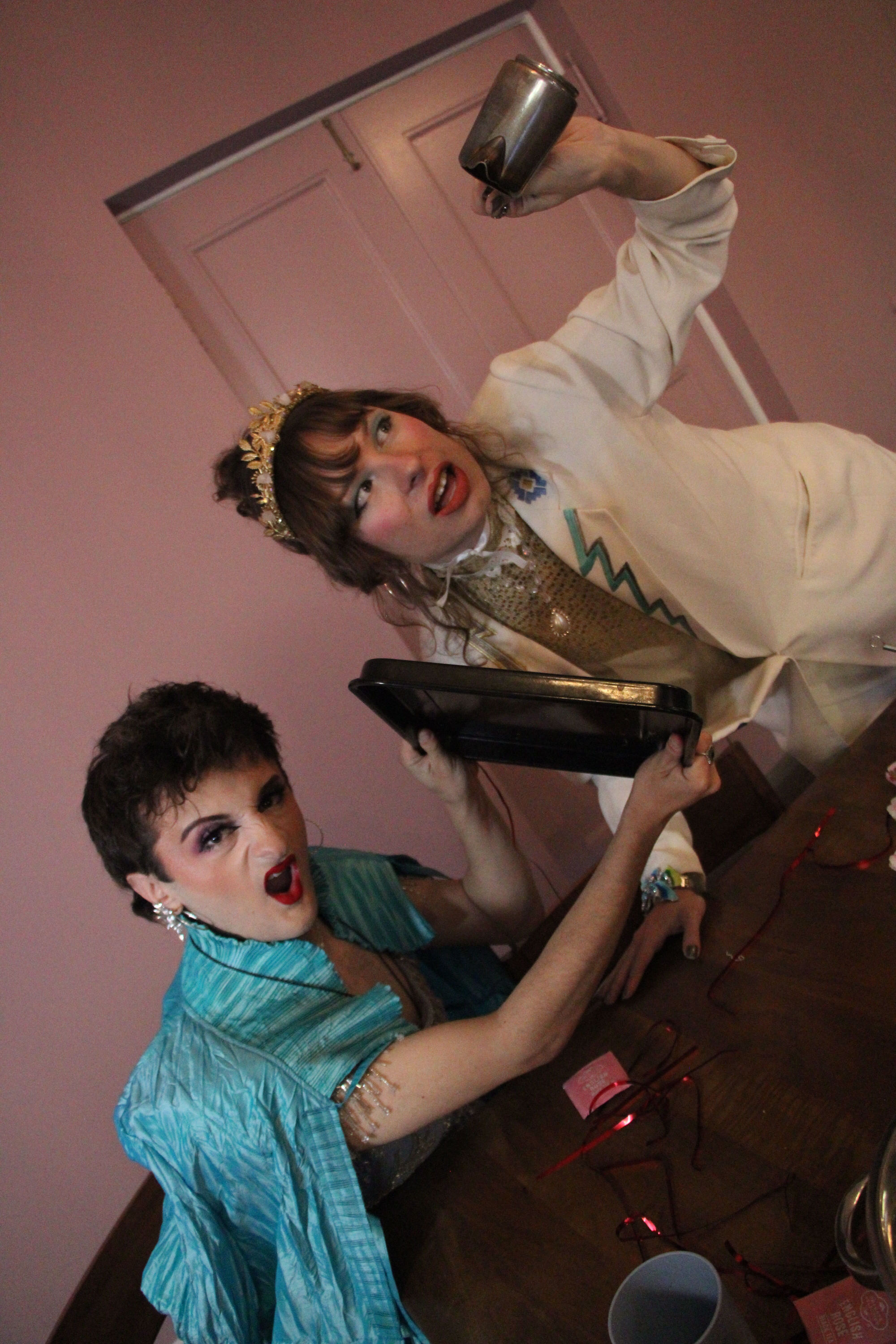Make Kitsch Happen
“No matter how much we scorn it, kitsch is an integral part of the human condition,” Milan Kundera in The Unbearable Lightness of Being
I did not know much about my great-aunt when she passed. I knew she was a nurse before her vision went, although she did not need it to be the president of her quilting circle. I knew she attended the same church above the intersection of King and Nicolet every Sunday for the forty-two years she lived in L.A., and was Mrs. Claus in the Christmas pageant for at least thirty of those years. I knew she had a sweet tooth, always with a stock of A&W root beer in her icebox or a blueberry pie cooling on her windowsill. Above all else, I knew that she was a woman who lived a life of constant sentimentality.
This fact wasn’t immediately apparent to me, only occurring while I sifted through her home and the ephemera of her life. The shelves of porcelain nativities and Precious Moments figurines; the cabinets of yellowing doilies, mismatched teacups, and china plates inscribed with Bible verses; the walls cluttered with Thomas Kinkade cottages and Norman Rockwell soda bars; the brocade loveseats loaded with bristled teddy bears and Cabbage Patch dolls; and her wardrobe brimming with garish frocks and blazers, button-down silk blouses, gaudy pearl necklaces, and novelty handbags.
As a child, her home frightened me beyond all reason. Everything she owned seemed sheepish and sinister; grinning and blushing at you as though harboring a secret. But as an adult, I found that her home no longer seemed so uncanny and that the artifacts of her life had accumulated interest. They were deposits in an account of a life lived in true and tender sincerity– little altars to Middle American kitsch.
Derived from the German word for “trash,” kitsch originated in the art world as a catchall term for the cheap, derivative street art sold to the working class. Over time, however, kitsch was known to reference every ubiquitous and gratifying thing in pop culture to evoke emotional reactions out of consumers. Like its more pronounced counterpart, camp, kitsch is hinged on extravagant and poor taste, but unlike camp, kitsch is unironic. Everything that relies on reference and emotional resonance can be considered kitsch. Kitsch is a global phenomenon, especially in the world of fashion. Kitsch fashion generally relies on bold, clashing patterns, gaudy embellishment, and character motifs, from the “Kawaii” subculture of Japan to the Vivienne Westwood and Alexander McQueen of Britain. In America, however, kitsch has come to represent a very distinct niche of 20th-century middle class consumption.
We hear “kitsch,” and don’t think of our own “Kenough” sweaters and BRAT baby tees, but to the sappy, soapy memorabilia of our grandmothers. Their Bonnie Tyler records, their Golden Girls reruns, their Red Hat societies, their commemorative china, their needlepoint. Our grandmother’s kitsch is still the pinnacle of the word. 1980s and 1990s kitsch is synonymous with a middle-class practice that has gotten lost in the turn of the century: craft. To unpack the correlation between kitsch, craft, and the middle class, however, we must first confront the operational definition of kitsch.
America’s premier art critic, Clement Greenberg, loathed kitsch, regarding it as an existential threat to the burgeoning avant-garde and a faultline in the integrity of culture as a whole. Writing in his seminal 1939 essay, “Avant-Garde and Kitsch,” Greenberg stated, “Formal culture has always belonged to the [powerful], while the [exploited and poor] have had to content themselves with folk or rudimentary culture, or kitsch.” To Greenberg, uplifting the proletariat meant elevating his aesthetic sensibility, and elevating that sensibility meant exterminating all that affronted it, namely, kitsch. The art Greenberg considered to be of “elevated” taste challenged some sort of intellectual exercise or interpretation. But kitsch does not dare the consumer with interpretation, instead comforting them with unambiguity, nostalgia, and novelty. Greenberg continued, “Kitsch changes according to style, but remains always the same. Kitsch pretends to demand nothing of its customers except their money—not even their time.”
The 1950s was a decade that essentially defined the American middle class. It was a golden age of novelty and convenience. Home appliances revolutionized household chores, reducing laborious hours to easy minutes. Instead of chopping up proportions of the barley, beef, potato, and thyme it would take to make a vegetable beef soup, one could simply buy a Campbell’s Soup can from the grocery store. Another pillar of Middle American life made popular by 1950s leisure culture was “craft,” or a low art engaged purely for fun, otherwise known as hobbies. Model-making, needlepoint, crochet, embroidery, and everything else encompassed under the umbrella of “arts and crafts.” It was an exercise in “art for art’s sake.” Kitsch made by and for the middle class.
Despite Greenberg’s best efforts, the art world of the 1950s was fully taken by these temptations, with many artists through the 1950s and 1960s such as Andy Warhol and Roy Lichentstein incorporating fixtures of pop and commercial culture in their artwork. Even into the 1970s, the art world held onto kitsch. The Feminist Arts movement regarded it as a distinctly “feminine” art form because the main beneficiaries of both home appliances and craft hobbies were housewives. Artists such as Judy Chicago and Miriam Shapiro used “craft” material (ie. quilting fabric, porcelain, and embroidery in their art pieces) as an act of reclamation and a form of liberation. If kitsch was for the middle class, then craft was kitsch for the Middle American woman.
The economic prosperity of Middle America in the 1980s and the 1990s meant a resurgence of craft, comfort, and leisure. This was a time for supermarket paperback romance and Days of Lives rewatched over Marie Callender TV dinners. A time for philanthropic leagues with charity organizations, with a healthy dose of religiosity (because this is America after all). It was a new height for Middle America and thus, a new height for kitsch.
Ungaro SS1989 ready-to-wear collection, taken from Vogue Online
Karl Lagerfeld's collection for House of Chanel, July 12, 1983 (Fairchild Archive/Getty Images), taken from Vogue Online
The fashion world reflected America’s push towards kitsch, with designers like Jean Paul Gaultier, Yves Saint Laurent, Claude Montana, Theirry Mugler, and Emanuel Ungaro releasing lines of garish power suits that paired sharp silhouettes with frenetic patterns. The sparkly neon Lycra leotards made the rounds in department stores in the wake of Jane Fonda’s iconic workout routines. The New Romantic style saw visionary designers like Vivienne Westwood, Malcolm McLaren, Rifat Ozbek, Martin Kidman, and Stephen Jones made couture out of the most punchy elements of the punk and glam rock aesthetics. Karl Lagerfeld breathed new life into the wilting fashion house of Chanel with darling looks that melded modern styles with classic Chanel charm.
Influencer, Nara Smith (@naraaziza) for GQ
This was not all good of course, given that the act of “reclaiming kitsch” presents its own ethical dilemmas. Feminist Arts’ assumption that legitimizing Middle American kitsch was akin to the global liberation of women was naive at best and ethnocentric at worst. Middle American womanhood is a narrow, rigid paradigm that excludes people who don’t fit the ideal (ie. BIPOC, queer people, poor people). The modern-day phenomena of “cottagecore” and “coquette” aesthetics can attest to this. So many acts of “reclaiming” feminine kitsch dovetail into rigid reinforcement of stereotypical gender roles evidenced by the rise in Trad Wife influencers. The 1980s had its fair share of regression that need not be hashed out here. Katherine Sugg presented the argument best in her book, Kitsch: From Education to Public Policy, writing, “Manufacturers of Kitsch are aware of a given audience’s cultural biases and deliberately exploit them, engaging the emotions and deliberately ignoring the intellect. [I]t is a form of cultural anesthesia. This ability to build and exploit cultural myths—and to easily manipulate conflicted history—makes Kitsch a powerful political construction.”
But that would be giving kitsch too much credit. At least, for the purposes of this article.
While critics are valid in attacking kitsch’s banality and profit motive, so are the middle-class consumers who engage kitsch’s idealism and emotionality. For its intense melodrama, appropriation of Classical painting styles, and unsubtle Biblical and Classical motifs Renaissance art qualifies as kitsch. The only distinction being that Michangelo and Raphael were not commissioned by common folk, but wealthy patrons. Indeed, much of high art was produced as a high value kitsch. Yet one is considered artistry, while the other is dismissed as abject.
Though critics are loath to say, we can never eradicate kitsch because it appeals to the most basic human condition: emotion. The remedy to an excess of emotion is not interpretation, but empathy. And even though we memorialize our grandmother’s kitsch in our minds, or even try to recreate it in our lives, we will always, naturally, invent our own kitsch.
In the final line of her essay, “Against Interpretation,” Susan Sontag declared, “In place of a hermeneutics we need an erotics of art.” In other words, our world is so bombarded by excess and overproduction that we are compelled to analyze every aspect of the surplus. Yet, we fail to extract the core meaning of what we’re experiencing. Think of all the video essays and TikToks breaking down every -core, aesthetic, microtrend, macrotrend, and fill-in-the-blank “era” under the sun. Sontag invites us to focus more on the sensual experience of art by withholding contextual analysis.
This is not to dismiss the necessity for interpretation and introspection, but to instead illuminate that emotional connection is just as vital. There is virtue in leading a life absent of nuance, where every action is a sincere one and every moment a precious one. To boldly say, “I bought the sweater because I thought it was sweet” or “I collect Calico Critters because they make me smile.” It may not be the most profound way to live, but it certainly is the most passionate one. And I don’t think the middle class should be exorcised of such passion, no matter how hideously sentimental our homes end up as a result.













